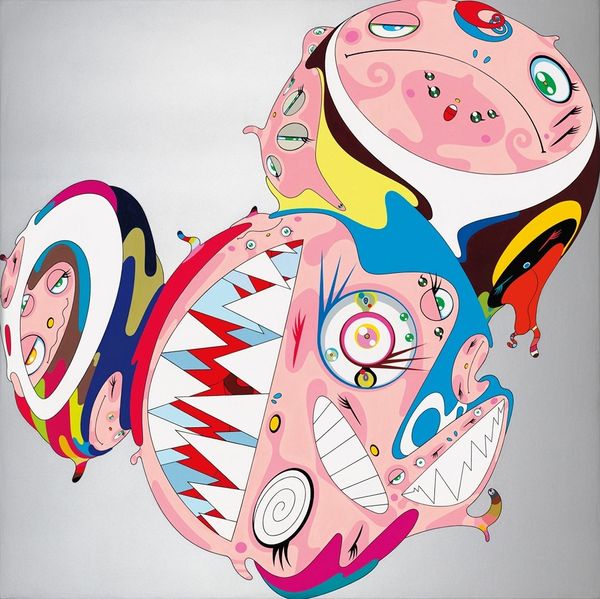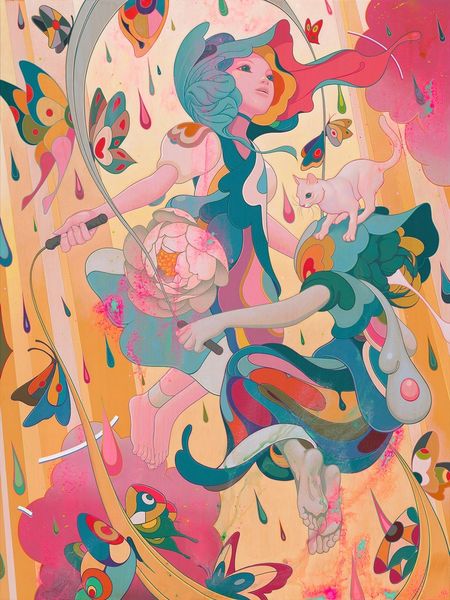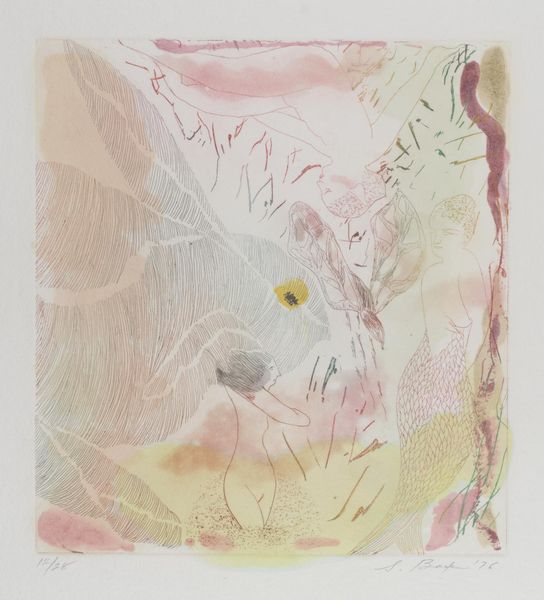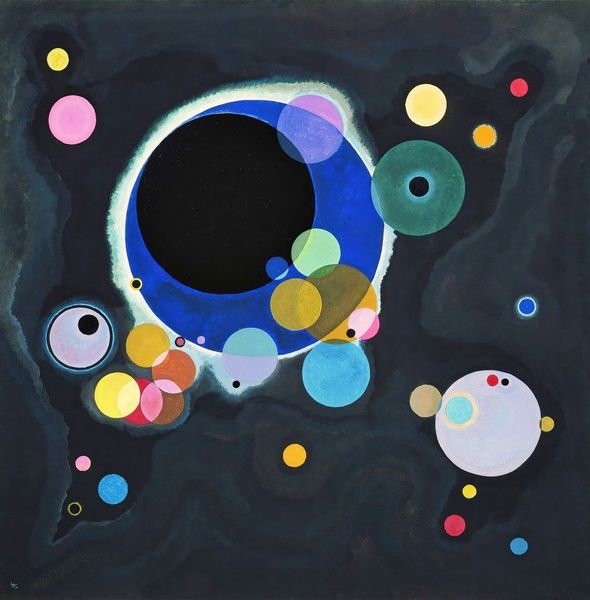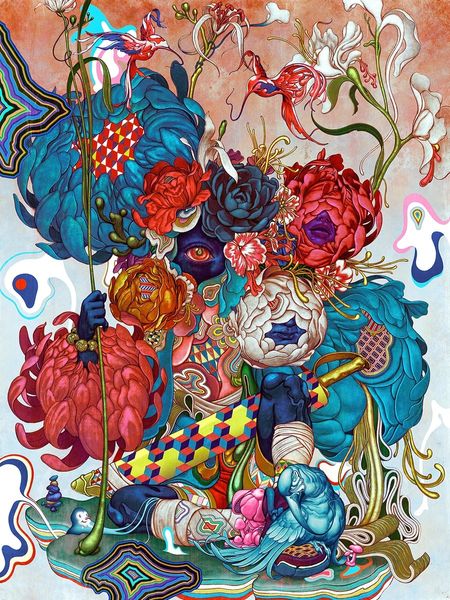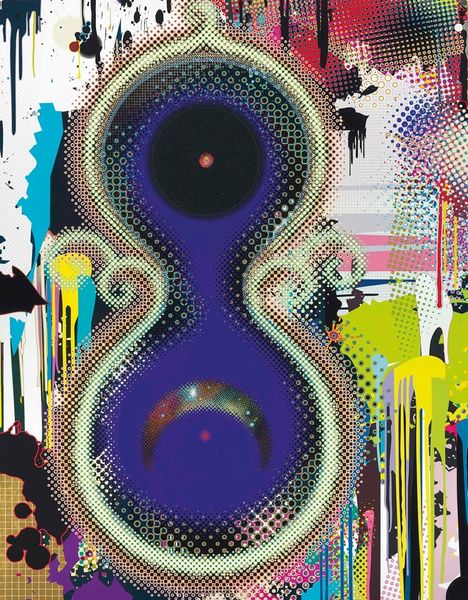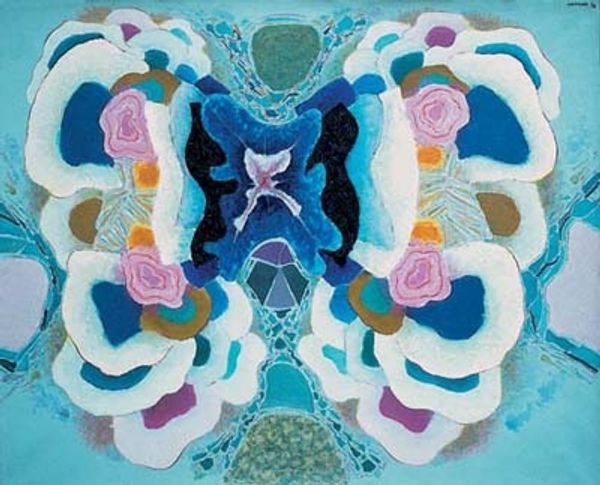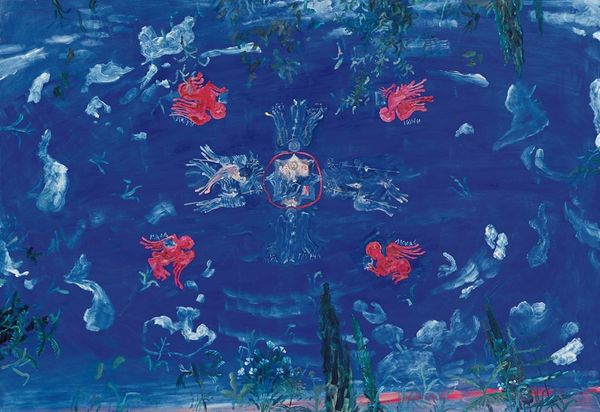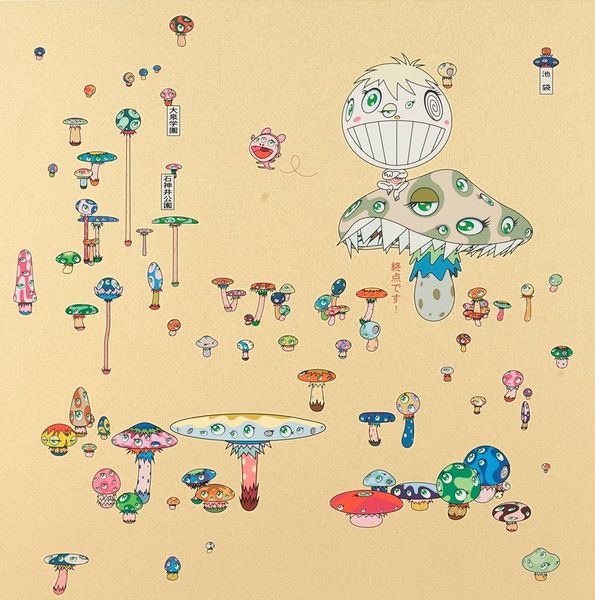
#
neo-pop
Copyright: Modern Artists: Artvee
Editor: So, this piece is "Close Encounters of the Third Kind" by Takashi Murakami, from 2002, created with acrylic paint. It's giving me a very playful, almost dreamlike, vibe with all the cartoonish figures floating around. What's your take on it? How do you interpret this work through a formal lens? Curator: Precisely. Let's examine the elements Murakami presents. Notice the high key palette—the deliberate juxtaposition of turquoise, yellow, and the blush tones generates a stimulating visual dynamic. How does the symmetry, or asymmetry, of the composition strike you? Editor: I see that there’s a large central, almost planet-like, form, and then these smaller characters are scattered somewhat randomly around it. Does this intentional lack of perfect symmetry play a role? Curator: Indeed. The strategic dispersal of forms generates a tension between order and chaos. Also, let's consider line. What function does line fulfill in structuring this artwork? Editor: I see a lot of bold outlines defining each form, almost like stained glass. And within those forms, there are swirling, calligraphic lines adding a sense of movement. Curator: A keen observation. These precise contours establish clear boundaries between the figures and the flat, neutral background, pushing forward the picture plane. What overall impression do you get from this kind of rendering style? Editor: It makes it feel very flat and graphic, like a poster or even something digital. Curator: Precisely, denying depth, while playing with form, contributes to its unique spatial quality, doesn't it? These playful subversions are something I appreciate most. Editor: That's really helpful; I never thought about analyzing art in such specific terms. Looking at the artwork through line, color and form certainly offers an informed view! Curator: Precisely! These intrinsic elements invite the audience to connect deeply with the work through visual analysis, without cultural context.
Comments
No comments
Be the first to comment and join the conversation on the ultimate creative platform.

